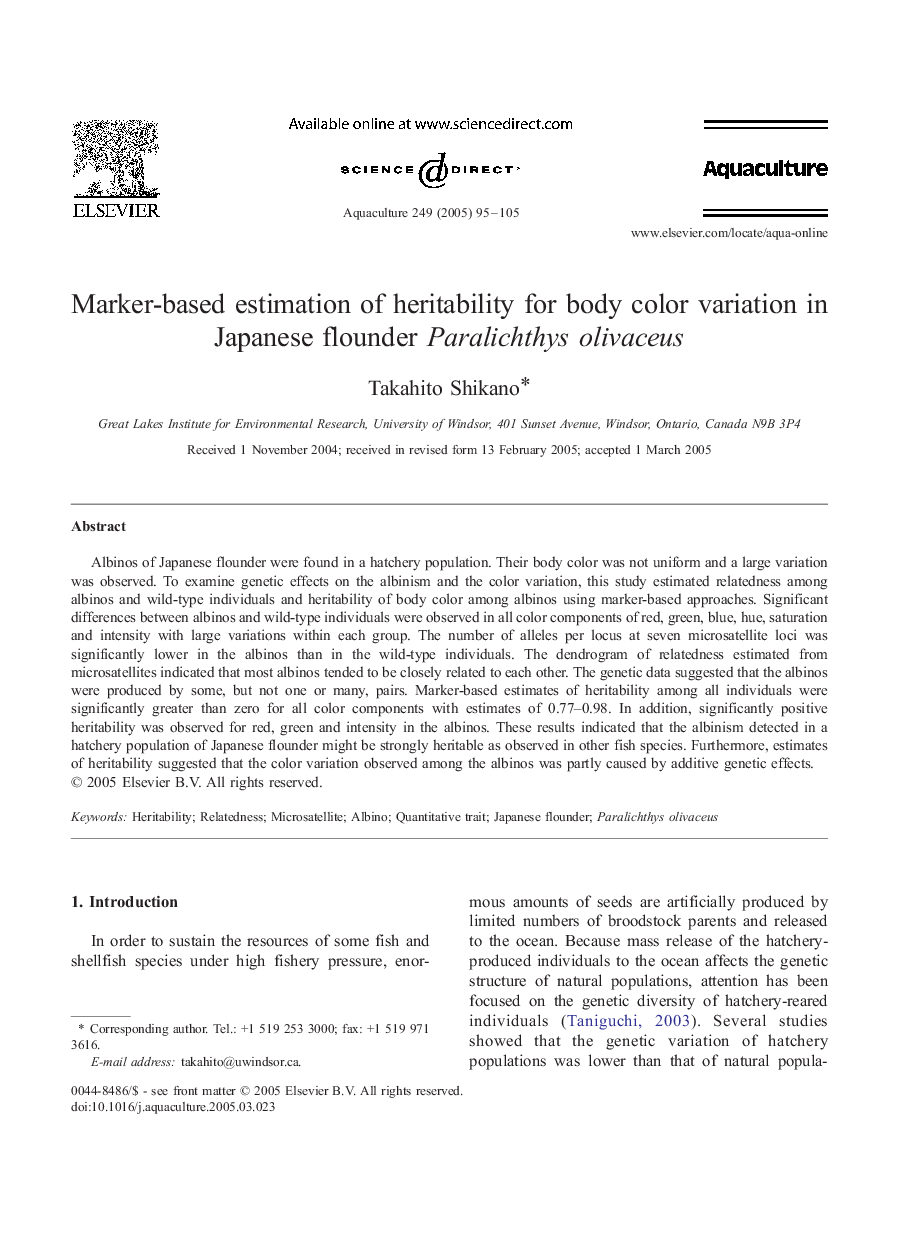| Article ID | Journal | Published Year | Pages | File Type |
|---|---|---|---|---|
| 8974678 | Aquaculture | 2005 | 11 Pages |
Abstract
Albinos of Japanese flounder were found in a hatchery population. Their body color was not uniform and a large variation was observed. To examine genetic effects on the albinism and the color variation, this study estimated relatedness among albinos and wild-type individuals and heritability of body color among albinos using marker-based approaches. Significant differences between albinos and wild-type individuals were observed in all color components of red, green, blue, hue, saturation and intensity with large variations within each group. The number of alleles per locus at seven microsatellite loci was significantly lower in the albinos than in the wild-type individuals. The dendrogram of relatedness estimated from microsatellites indicated that most albinos tended to be closely related to each other. The genetic data suggested that the albinos were produced by some, but not one or many, pairs. Marker-based estimates of heritability among all individuals were significantly greater than zero for all color components with estimates of 0.77-0.98. In addition, significantly positive heritability was observed for red, green and intensity in the albinos. These results indicated that the albinism detected in a hatchery population of Japanese flounder might be strongly heritable as observed in other fish species. Furthermore, estimates of heritability suggested that the color variation observed among the albinos was partly caused by additive genetic effects.
Keywords
Related Topics
Life Sciences
Agricultural and Biological Sciences
Aquatic Science
Authors
Takahito Shikano,
